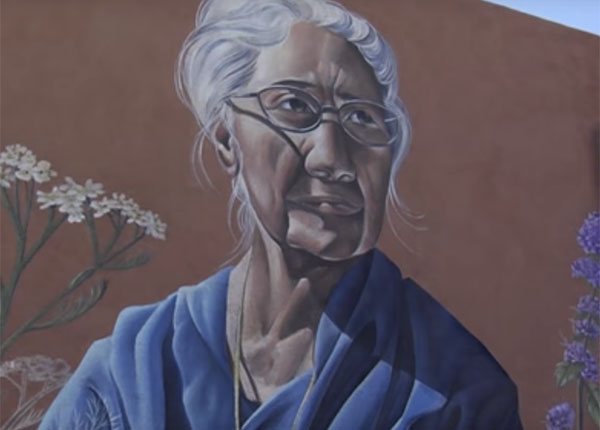WATCH: Barelas Documentary
The area now known as Barelas was originally the site of an important river crossing on El Camino Real de Tierra Adentro, the main Spanish trade route through New Mexico. The name Barelas is thought to come from a local landowner named Pedro Varela (or Barela), who had a ranch in the area. Barelas in the late 1800s was a quiet agricultural community, with 309 residents listed in the 1870 Census and 350 in 1880. The village did see minor action during the American Civil War, most notably during the Battle of Albuquerque in April 1862.
A new era began when the Atchison Topeka and Santa Fe Railroad arrived at Albuquerque in 1880. The company built shops on the eastern edge of Barelas, employing men from past generations of Hispanic families still living in Barelas today. An influx of immigrants arrived looking for jobs or a new way of life. Soon, a community of Germans, Italians and other immigrants developed in Barelas, close to the bustling downtown.
By the early 1900s Barelas had become a vibrant neighborhood with many of its residents becoming entrepreneurs or employees of the railroad. The little village had its own chapel, San Jose Patriarca, which was probably located along Barelas Road, although the exact location is not known. In 1921, the small adobe chapel was replaced by a larger church Sacred Heart, which stood along Fourth Street until 1965, when it was demolished due to structural problems. The church was never rebuilt, but its former Parish Hall has since been remodeled and become the church building.
South Fourth Street, at first a residential street, was declared part of Route 66 and the Pan American Highway (US 85) in 1926. This helped create a thriving automobile commercial strip in the community, which enjoyed a peak of popularity from the 1930s to 1950s. During this time, many businesses located along Fourth Street and continue to operate today. Among these are Ruppe Drugs, The Red Ball Cafe, and Ives Flower and Gift Shop.
By 1934 the neighborhood’s first community center was established at 1221 Third Street. In the early 1940s, citizens of Barelas, the League of United Latin American Citizens (L.U.L.A.C.), and youth trainees from the National Youth Administration raised seed money to fund a new community center. The center, now located at the intersection of Barelas Road and Hazeldine Avenue, is over fifty years old.
The decline in the railroad industry following the wars and the eventual replacement of Fourth Street by Interstate 25 as the major north-south city route initiated a major decline in Barelas. The 1970s Urban Renewal Program removed most of the adobe homes located south of Bridge Boulevard. South Barelas was almost completely lost and only a handful of houses remain today. However, the neighborhood area north of Bridge Boulevard still exists with a mixture of single family and multi-family dwellings. Some of the original small, family-owned and operated businesses persevered and still exist today on Fourth Street, and new ones have opened.


